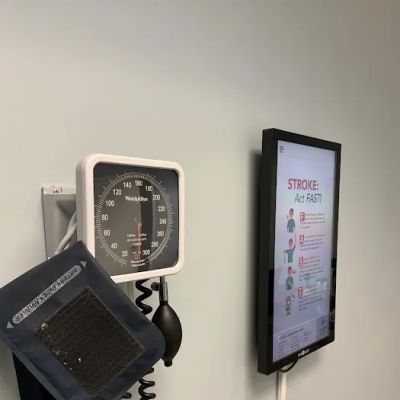1. Understanding the Importance of a Heart-Healthy Diet
A heart-healthy diet is one of the most important factors in maintaining overall health and preventing heart disease. According to experts, the foods we eat can have a significant impact on our heart health, influencing everything from blood pressure to cholesterol levels. But with so many different diets, fads, and conflicting information out there, it can be difficult to know what to buy when you’re heading to the grocery store.
In this guide, we’ll help you create a heart-healthy grocery shopping list that supports cardiovascular health. By choosing the right ingredients, you can improve your heart health, reduce the risk of heart disease, and enjoy delicious meals at the same time. Let’s dive into what you should be focusing on while grocery shopping to keep your heart in top shape.

2. Key Ingredients for a Heart-Healthy Grocery List
When shopping for heart-healthy foods, it’s essential to focus on whole foods, unprocessed ingredients, and those rich in nutrients that support heart health. Below are the categories and specific foods that should be on your heart-healthy grocery list:
Atlanta Heart Specialists
atlanta heart specialists
4375 Johns Creek Pkwy #350, Suwanee, GA 30024, USA

2.1 Fruits and Vegetables
Fruits and vegetables are packed with essential vitamins, minerals, and fiber, which are critical for heart health. They are naturally low in calories and high in nutrients, making them the perfect addition to any diet. Aim to include a variety of colorful fruits and vegetables to maximize the range of nutrients you’re getting. Some great options include:
- Leafy greens (spinach, kale, collard greens)
- Brightly colored vegetables (bell peppers, tomatoes, carrots)
- Fruits high in fiber and antioxidants (apples, berries, oranges)
- Cruciferous vegetables (broccoli, cauliflower, Brussels sprouts)
Try to fill half your plate with vegetables at every meal to ensure you're getting plenty of heart-healthy nutrients.
2.2 Whole Grains
Whole grains are an excellent source of fiber, which helps lower cholesterol levels and improve heart health. They are also rich in B vitamins, which help reduce the risk of heart disease. Swap refined grains like white bread and pasta for whole grains like:
- Oats
- Brown rice
- Whole wheat bread and pasta
- Quinoa
- Barley
These grains are nutrient-dense and provide long-lasting energy while supporting healthy digestion and heart function.
2.3 Lean Proteins
Incorporating lean proteins into your diet is key to maintaining a heart-healthy lifestyle. Lean meats like chicken, turkey, and lean cuts of pork are excellent sources of protein without the added saturated fats. Plant-based protein options are also great for your heart, such as:
- Legumes (beans, lentils, peas)
- Tofu and tempeh
- Nuts and seeds (in moderation)
Fish, particularly fatty fish like salmon, mackerel, and sardines, are excellent choices due to their high omega-3 fatty acid content, which helps reduce inflammation and lower the risk of heart disease.
2.4 Healthy Fats
Fats are an essential part of a balanced diet, but it’s important to choose the right kinds of fats. Unsaturated fats are heart-healthy fats that can help lower bad cholesterol and reduce the risk of heart disease. Look for sources of healthy fats like:
- Olive oil and avocado oil
- Avocados
- Nuts and seeds (such as walnuts, almonds, chia seeds, flaxseeds)
- Fatty fish (salmon, mackerel, sardines)
Avoid trans fats and saturated fats, which are found in many processed and fried foods. Choose cooking oils and spreads that are rich in unsaturated fats instead.
2.5 Low-Fat Dairy
If you consume dairy, opt for low-fat or fat-free versions to reduce your intake of unhealthy fats. These include options like:
- Low-fat or fat-free milk
- Low-fat or fat-free yogurt
- Reduced-fat cheese
These dairy products provide calcium and vitamin D while supporting heart health without contributing to high levels of saturated fats.
3. Healthy Beverages to Include in Your Grocery List
What you drink is just as important as what you eat when it comes to supporting heart health. Instead of sugary sodas or high-calorie beverages, focus on drinks that provide hydration and essential nutrients for your heart:
3.1 Water
Water should be your go-to beverage. It keeps your body hydrated and helps maintain proper circulation. You can also infuse your water with fresh fruits like lemon, lime, or cucumber for added flavor and nutrients.
3.2 Green Tea
Green tea is rich in antioxidants called catechins, which have been shown to improve heart health by lowering blood pressure and cholesterol levels. It’s a great alternative to sugary beverages and provides a gentle energy boost.
3.3 Unsweetened Herbal Teas
Herbal teas like chamomile, peppermint, and rooibos are naturally free of caffeine and sugar. They offer a variety of health benefits, such as improving digestion and reducing inflammation, which supports overall heart health.
4. Tips for Smart Grocery Shopping for Heart Health
Now that you know what to include in your heart-healthy grocery shopping list, here are a few tips to help make the shopping process easier and more effective:
4.1 Stick to the Perimeter
When grocery shopping, try to stick to the perimeter of the store, where fresh produce, meats, and dairy products are typically located. The inner aisles are often stocked with processed foods, which are high in unhealthy fats, sugars, and salt. Limiting your time in the aisles can help you make healthier choices.
4.2 Plan Your Meals Ahead
Before heading to the store, plan your meals for the week. This will help you create a list of heart-healthy ingredients, so you won’t be tempted to buy unhealthy, impulse items. Meal planning also ensures you have a variety of foods to keep your meals exciting and nutritious.
4.3 Read Labels Carefully
When buying packaged foods, always check the labels for hidden sugars, trans fats, and high levels of sodium. Choose products that are low in sodium and contain minimal added sugars. Look for items labeled as “heart-healthy” or “low-fat” to make healthier choices.
5. Real-Life Example: A Heart-Healthy Grocery Haul
Let’s take a look at a real-life example of a heart-healthy grocery haul. Sarah, a 45-year-old woman who recently had high cholesterol, decided to revamp her shopping habits after speaking with her doctor about heart health. On her grocery trip, Sarah focused on buying foods from the heart-healthy categories we’ve discussed:
- She picked up fresh spinach, kale, and colorful bell peppers.
- For protein, she grabbed wild-caught salmon, chicken breast, and canned beans.
- She chose whole grains like brown rice, oats, and quinoa, and stocked up on walnuts and flaxseeds.
- Sarah added olive oil, avocado, and low-fat dairy options to her cart, along with some herbal teas.
By planning ahead and sticking to her heart-healthy grocery list, Sarah was able to make healthier choices that helped her lower her cholesterol and improve her overall heart health.
6. Conclusion: A Heart-Healthy Grocery List for a Healthier You
Creating a heart-healthy grocery shopping list is an essential step toward improving your heart health and overall well-being. By focusing on whole foods, lean proteins, healthy fats, and fiber-rich fruits and vegetables, you can make better choices that benefit your heart for years to come. Shopping smart, reading labels, and planning meals ahead of time will make it easier to stick to your heart-healthy goals.
If you're looking for personalized advice on heart health or need assistance in creating your heart-healthy grocery list, visit HeartCare Hub for expert recommendations and support.






















Deborah Heart and Lung Center
deborah heart and lung center
200 Trenton Rd, Browns Mills, NJ 08015, USA